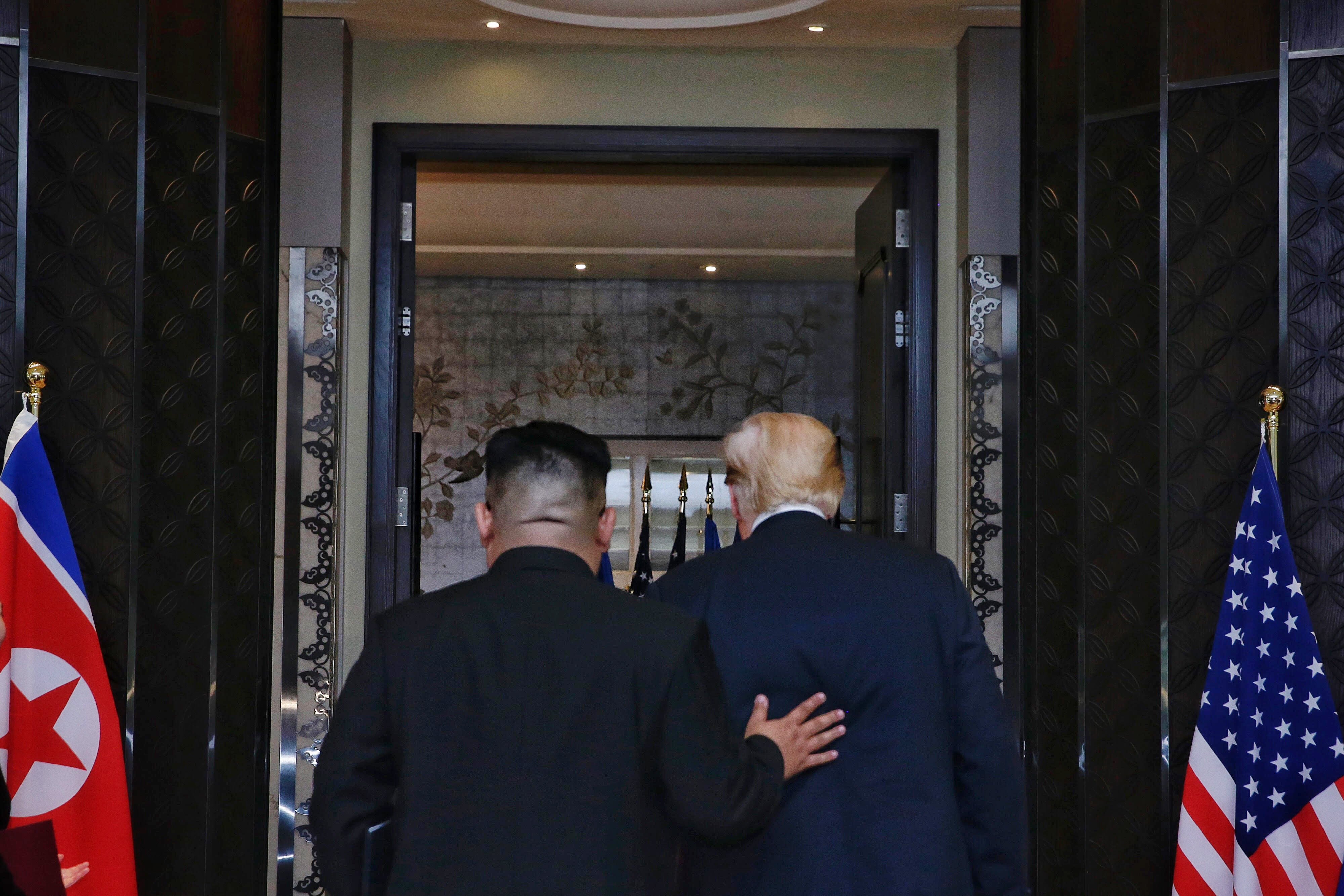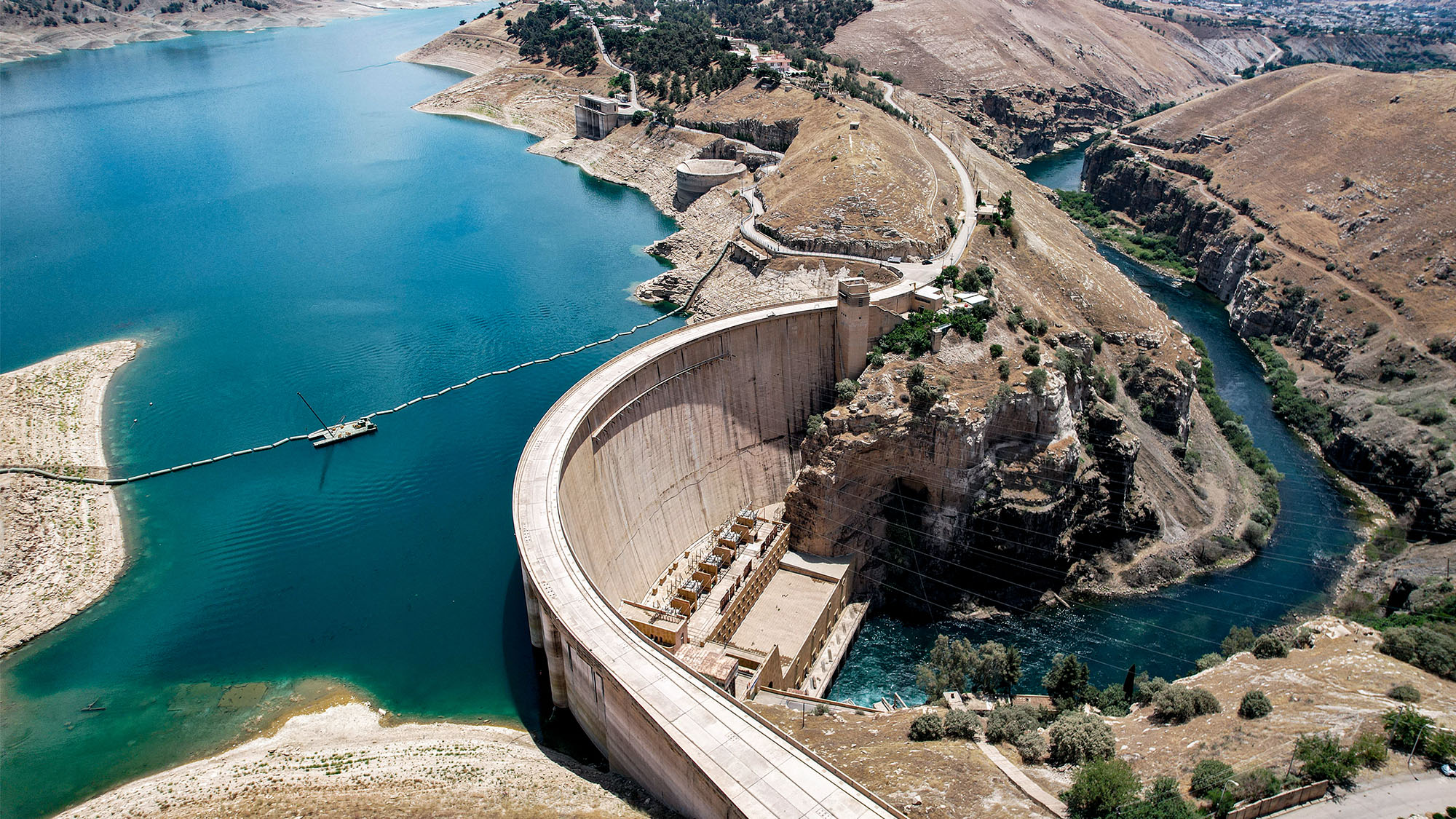It's way too soon to draw conclusions from the Trump-Kim summit
The meeting was historic, but its true significance will only become clear with time


President Trump met with Kim Jong Un, the hereditary dictator of North Korea, on Tuesday, and even if it was little more than a symbolic occasion marking out nothing more than the path ahead, the event made history. The world's media flocked to Singapore to cover the first face-to-face meeting between the leaders of the two nations, after more than a year of rhetorical hostilities had brought them both seemingly to the brink of war. The summit had been prompted by Kim, canceled by Trump, and then eventually restored, as both sides sized each other up.
Expectations for the summit were high, and interest was even higher. Many are eagerly seeking answers to big questions: What does the summit mean? What's the takeaway? How should we react? But these questions are based on a mistaken assumption that the meeting somehow represents the end of a process. In reality, if the meeting signaled anything at all, it is the beginning of a long path forward, and right now, it's nearly impossible to gather any meaningful conclusions.
The run-up to the meeting should have informed observers about rational expectations. In most summits, heads of state do not meet until their teams have debated and bargained concrete proposals, with the leaders formalizing agreements that have already been all but made. The U.S.-Soviet Union summits on nuclear arms provide a good example of that process, although even those provided a surprise or two. The late 1986 summit between Ronald Reagan and Mikhail Gorbachev in Reykjavik collapsed over the Strategic Defense Initiative, but enough was accomplished for Reagan to get the terms he wanted a few months later in the Intermediate-Range Nuclear Forces Treaty.
The Week
Escape your echo chamber. Get the facts behind the news, plus analysis from multiple perspectives.

Sign up for The Week's Free Newsletters
From our morning news briefing to a weekly Good News Newsletter, get the best of The Week delivered directly to your inbox.
From our morning news briefing to a weekly Good News Newsletter, get the best of The Week delivered directly to your inbox.
But the Trump-Kim meeting was not a summit in the classic sense. Instead of coming at the end of a long process, it came at the beginning of a sudden thaw as a means of testing whether there would be a process at all. No deal was cut, which was not surprising since no options for a deal had been seriously proposed or even spitballed. Instead, the two leaders signed an agreement that is only notable for its lack of concessions by either side.
The four points in the document only include one specific commitment to action: The Kim regime agreed to recover and return the remains of American POWs and MIAs from the Korean War. Otherwise, the document only commits both sides to continued talks to "build a lasting and stable peace regime on the Korean Peninsula," and identifies "complete denuclearization" as the key goal of those discussions. Trump added a concession in parallel by suspending joint military exercises with South Korea, but those can be restarted just as easily as they were stopped. That concession also parallels unilateral pledges made by Kim prior to the summit to suspend all nuclear and missile testing, and perhaps provides a sweetener to keep Kim committed to the process.
Notably, the agreement and the parallel agreements do nothing to lift sanctions on Pyongyang, despite confusing claims from North Korean state media. That represents a change in the American approach from previous agreements with North Korea for denuclearization. In the past, the U.S. would offer sanctions relief and aid in the form of fuel and food during the negotiations. Trump insisted he would not follow that precedent and would maintain "maximum pressure" until a final agreement could be achieved. Since sanctions appear to be the driving force behind Kim's sudden willingness to talk, the U.S. hasn't given up anything of substance, even with the suspension of joint military exercises. But we haven't achieved anything of substance, either, at least not yet.
Rather than see this as a first step in a process with unknown outcomes, most people appeared to rush to various conclusions: One side hailed the meeting as a historic achievement that should guarantee Trump a place in history, while the other considered it a surrender by Trump and a betrayal of our allies. In truth, very little has changed. Both sides have had an opportunity to size each other up and prepare for the next steps of the process, assuming those next steps come at all.
A free daily email with the biggest news stories of the day – and the best features from TheWeek.com
We have plenty of time to pass judgment on this strategy depending on the eventual outcome. Let's not forget that the world hailed 1994's Agreed Framework, which was supposed to halt North Korea's power plant program, as a historic achievement at the time, only to discover that North Korea had been cheating all along and never planned to denuclearize. When attempts to tighten the inspection regime were made, it collapsed and led to the arms race that brought us to where we are today. Kim and his regime may still think they can get away with a similar ploy, which will make this week's summit just another missed opportunity in a nuclear standoff. On the other hand, the summit managed to at least change the rhetoric between the two nations, allowing an opportunity for progress if — and it's a big if — the Kim regime really does want to find a way out of the nuclear standoff it created with the U.S. and cannot hope to win.
But as tempting as it might seem, let's not jump to conclusions just yet. We haven't lost anything, but we also haven't yet solved the problem. Trump himself noted that, in six months, he may very well wind up with egg on his face if Kim backtracks or refuses to commit to verifiable denuclearization. Given the history of the Kim regime, it pays to be skeptical, but not close-minded. It certainly doesn't pay to declare victory just yet.
Edward Morrissey has been writing about politics since 2003 in his blog, Captain's Quarters, and now writes for HotAir.com. His columns have appeared in the Washington Post, the New York Post, The New York Sun, the Washington Times, and other newspapers. Morrissey has a daily Internet talk show on politics and culture at Hot Air. Since 2004, Morrissey has had a weekend talk radio show in the Minneapolis/St. Paul area and often fills in as a guest on Salem Radio Network's nationally-syndicated shows. He lives in the Twin Cities area of Minnesota with his wife, son and daughter-in-law, and his two granddaughters. Morrissey's new book, GOING RED, will be published by Crown Forum on April 5, 2016.
-
 The week’s best photos
The week’s best photosIn Pictures A drive in the desert, prayers with pigeons, and more
-
 The Week Unwrapped: Will drought fuel global violence?
The Week Unwrapped: Will drought fuel global violence?Podcast Plus why did Trump pardon a drug-trafficking president? And are romantic comedies in terminal decline?
-
 Sudoku hard: December 5, 2025
Sudoku hard: December 5, 2025The daily hard sudoku puzzle from The Week
-
 Has Zohran Mamdani shown the Democrats how to win again?
Has Zohran Mamdani shown the Democrats how to win again?Today’s Big Question New York City mayoral election touted as victory for left-wing populists but moderate centrist wins elsewhere present more complex path for Democratic Party
-
 Millions turn out for anti-Trump ‘No Kings’ rallies
Millions turn out for anti-Trump ‘No Kings’ ralliesSpeed Read An estimated 7 million people participated, 2 million more than at the first ‘No Kings’ protest in June
-
 Ghislaine Maxwell: angling for a Trump pardon
Ghislaine Maxwell: angling for a Trump pardonTalking Point Convicted sex trafficker's testimony could shed new light on president's links to Jeffrey Epstein
-
 The last words and final moments of 40 presidents
The last words and final moments of 40 presidentsThe Explainer Some are eloquent quotes worthy of the holders of the highest office in the nation, and others... aren't
-
 The JFK files: the truth at last?
The JFK files: the truth at last?In The Spotlight More than 64,000 previously classified documents relating the 1963 assassination of John F. Kennedy have been released by the Trump administration
-
 'Seriously, not literally': how should the world take Donald Trump?
'Seriously, not literally': how should the world take Donald Trump?Today's big question White House rhetoric and reality look likely to become increasingly blurred
-
 Will Trump's 'madman' strategy pay off?
Will Trump's 'madman' strategy pay off?Today's Big Question Incoming US president likes to seem unpredictable but, this time round, world leaders could be wise to his playbook
-
 Democrats vs. Republicans: who are US billionaires backing?
Democrats vs. Republicans: who are US billionaires backing?The Explainer Younger tech titans join 'boys' club throwing money and support' behind President Trump, while older plutocrats quietly rebuke new administration
